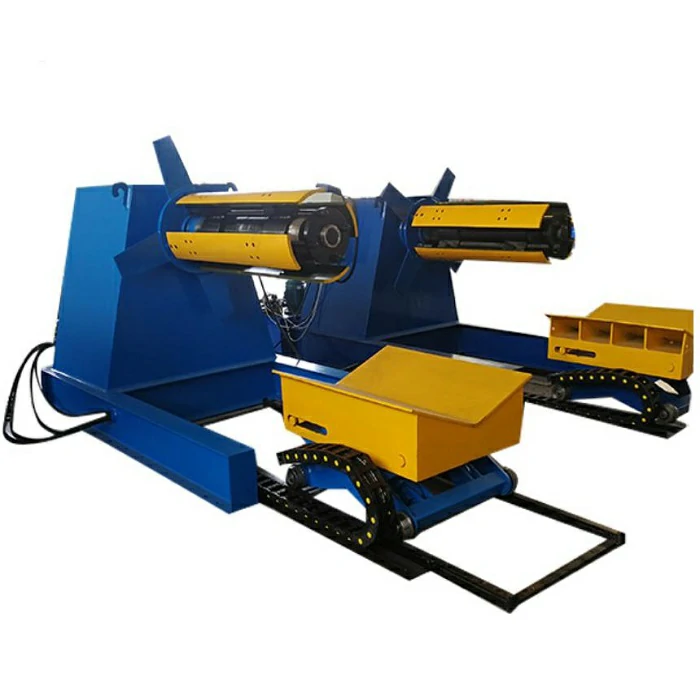decoiler
Understanding the Importance of Decoilers in Manufacturing
In the modern manufacturing landscape, efficiency and precision are paramount. Among the various equipment essential to streamline production processes, decoilers stand out as a crucial component, particularly in industries that work with coiled materials such as metal, wire, and plastic. A decoiler is designed to unwind coiled strip materials, allowing for seamless feeding into machines for further processing. This article examines the importance of decoilers, their working mechanism, types, and their impact on manufacturing efficiency.
What is a Decoiler?
A decoiler is a machine or apparatus that unwinds coiled materials and prepares them for subsequent operations. Typically used in conjunction with other machinery, decoilers ensure that the material is fed smoothly and consistently, minimizing the risk of damage or operational downtime. They are commonly employed in various sectors, including automotive, construction, and metal fabrication, where precise measurements and robust material handling are critical.
Working Mechanism
The operation of a decoiler can be straightforward yet highly effective. The coiled material is mounted on the decoiler, and as it is unwound, the decoiler allows the strip to pay out smoothly. Most modern decoilers are equipped with features like adjustable tension control, which helps maintain consistent unwinding pressure. This is crucial, as excessive tension can lead to material deformation or even rupture, while insufficient tension could cause feeding issues.
Additionally, many decoilers come with integrated mechanisms for detecting material thickness and width
. These sensors allow for automatic adjustments, ensuring that the feed aligns perfectly with downstream machinery, such as CNC machines, stamping presses, or welding units. The goal is to optimize the production flow and minimize manual interventions and adjustments.Types of Decoilers
Decoilers can be broadly categorized into a few types based on their operation and design
1. Manual Decoilers These are simple machines that require manual intervention to unwind the coil. They are suitable for small operations or where the coil loads are relatively light.
decoiler

2. Automatic Decoilers Equipped with advanced technology, these machines autonomously adjust their settings based on the material characteristics. They are ideal for large-scale operations where efficiency means higher productivity and reduced labor costs.
3. Heavy-Duty Decoilers Designed for heavy coils and larger materials, these robust machines can handle substantial weights and are typically employed in industries like metalworking and heavy manufacturing.
4. Portable Decoilers These compact and lightweight machines offer flexibility and mobility, making them perfect for job sites or smaller workshops where space is a premium.
The Impact on Manufacturing Efficiency
Incorporating decoilers into a production workflow can significantly enhance operational efficiency. By ensuring a consistent and controlled material feed, decoilers reduce the likelihood of potential bottlenecks in the manufacturing process. The automated features of modern decoilers minimize manual labor, allowing operators to focus on critical tasks that require skilled intervention rather than monotonous feeding operations.
Moreover, decoilers help in maintaining material integrity. Proper unwinding techniques prevent common issues like warping, snagging, or other mechanical failures that can occur when materials are improperly handled. This directly translates to better product quality, as well as cost savings associated with waste reduction and rework.
Lastly, the integration of decoilers into automated manufacturing systems can facilitate faster production cycles. By improving material flow and minimizing downtime, manufacturers can meet increasing demand without compromising on quality.
Conclusion
In summary, decoilers are more than just ancillary equipment in manufacturing; they are vital players in ensuring operational success. As industries continue to advance and embrace automation, the role of decoilers will only grow in significance. Investing in high-quality decoilers tailored to specific manufacturing needs can yield substantial returns, both in terms of efficiency and overall productivity. Thus, understanding and implementing the best decoiling solutions is an essential step for any manufacturing operation looking to thrive in today's competitive environment.
-
Top Metal Roofing Machine ManufacturersNewsAug.04, 2025
-
Production Line with a Gutter Forming Machine for SaleNewsAug.04, 2025
-
Production Capacity with a Purlin Machine for SaleNewsAug.04, 2025
-
Exploring Roofing Sheets Manufacturing Machine PriceNewsAug.04, 2025
-
Drywall Roll Forming Machine for SaleNewsAug.04, 2025
-
Best Roof Panel Machine for SaleNewsAug.04, 2025
-
Roof Panel Machines: Buying Guide, Types, and PricingNewsJul.04, 2025








